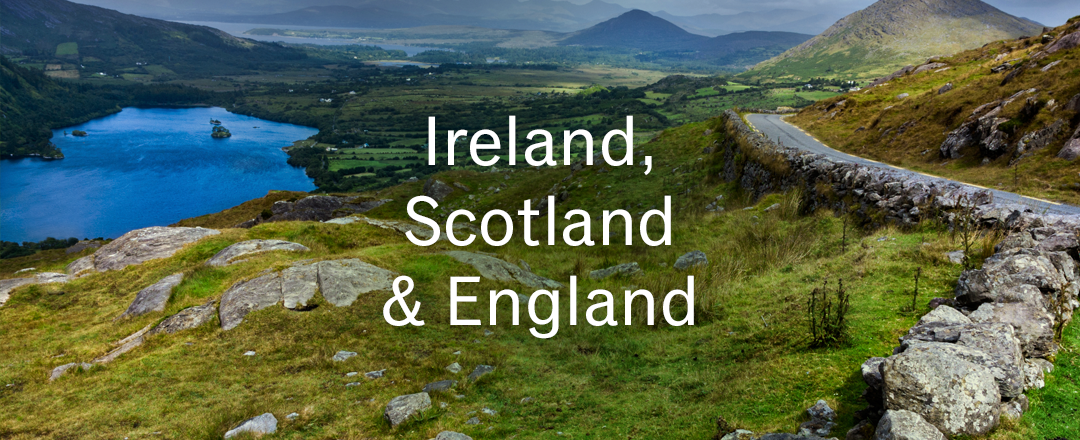Fans of British history, art, or literature will love this new tour offer: Ireland, Scotland & England is a 10-day immersion into all things British. Spend your days exploring Britain’s cities and experiencing its vast landscapes, and spend your nights enjoying the islands’ rich cultural offerings. From magnificent castles, to rolling green hills, to fascinating remnants of British history, this tour leaves no stone unturned, bringing out the anglophile in each and every student.
Day 1: Start tour
Day 2: Shannon, meet your tour director, travel to Killarney and check in to hotel
Day 3: Ring of Kerry
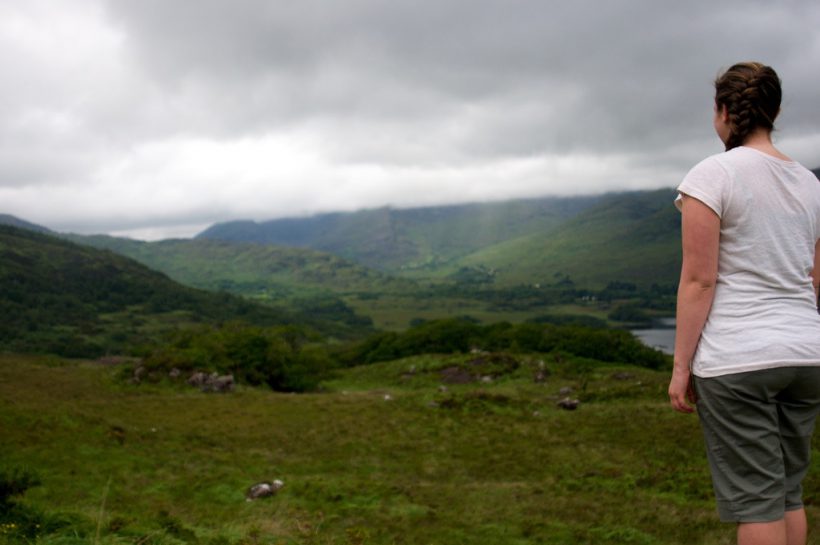
Begin your tour with the fascinating panoramic views of the Ring of Kerry — a long, circular route in southwestern Ireland, and an incredible 111-mile route through Ireland’s tourist attractions. The Ring features 18th-century and Victorian estates, and an Iron Age fort and 15th- and 16th-century castles. See if you can spot a red deer at Ireland’s first national park, and view the Lakes of Killarney and the surrounding mountains.
Finish off your day with a relaxing visit to a traditional Irish sheep farm. See snow-white sheep dot a sea of green grass, and watch sheepdogs round them up!
Day 4: Blarney Castle
Your next stop is the famous Blarney Castle, a fortification dating back to the 15th century. Tour the medieval castle and gardens before heading to the castle’s featured attraction: the Blarney Stone. Located at the top of the castle, the stone is known to give those who kiss it the gift of eloquence and flattery. Lean backwards over the edge of the castle to give the stone a smooch. Don’t worry — there are safeguards to prevent your fall, so you no longer have to rely on a friend holding your ankles.
Head on over to the country’s capital, and get a fascinating look at Ireland’s countryside along the way.
Day 5: Dublin
Wake up in Dublin and get ready to explore all the city has to offer. Start at Phoenix Park, home to herds of fallow deer and large areas of grasslands. First the site of an abbey and then a hunting park in the 17th century, the 1,750-acre park was made public in the 18th century, and it features the president’s residence, a massive 18th-century mansion.
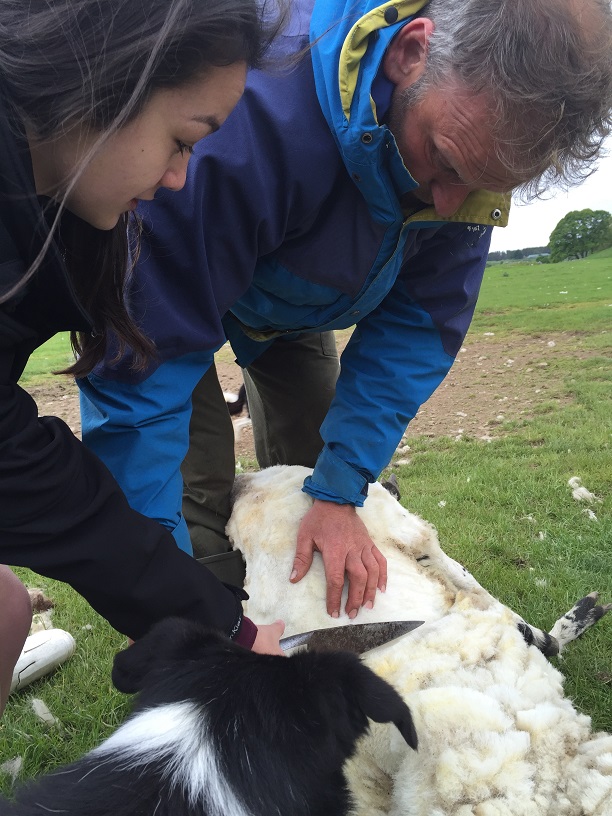
Head to St. Patrick’s, the breathtaking National Cathedral of the Church of Ireland. Founded in 1191, it’s the largest and tallest church in Ireland.
Trinity College is next, right in the heart of the city. Considered to be the most prestigious college in Ireland, Bram Stoker, Jonathan Swift, Oscar Wilde, and Samuel Beckett are among its most famous alumni. Visit the aptly named Long Room in the Old Library, home of thousands of rare volumes and some ancient texts, most notably the Book of Kells. Filled with ornately decorated illuminated manuscripts, the Book of Kells gives a new definition to the picture book. The 340 vellum (calf skin) leaves contain the Gospels of Matthew, Mark, Luke, and John, and were illustrated in the 9th century with black, red, purple, and yellow ink.
Continue your tour of the city center with a visit to O’Connell Street, once a narrow street in the 17th century that gradually expanded to its current width of 160 feet. The street was named for 19th-century nationalist leader Daniel O’Connell, whose monument stands at the south end.
O’Connell Street isn’t just a busy boulevard — it’s also been the site of Irish uprisings throughout the 20th century, during which time it was destroyed and rebuilt. Look out for the Spire of Dublin at the center of the street: The 390-foot tall stainless steel spire built in 1999 is still the tallest sculpture in the world. Running west from the spire is Henry Street, one of the hottest shopping streets in Dublin.
Day 6: North Wales
Goodbye, Dublin! Take a ferry ride across the Irish sea from Dublin into Holyhead in North Wales. From there, head to Snowdonia National Park, with a brief stop at Llanfairpwllgwyngyllgogerychwyrndrobwllllantysiliogogogoch — the longest place-name in Europe and the second longest in the world — along the way so you can take a picture in front of the railway station sign. Officially Llanfairpwllgwyngyll, it was given the longer name as an idea to attract tourists in the 19th century, and it’s clearly working.
Get a breathtaking look at Wales’ natural wonders at Snowdonia National Park. Mostly made up of mountains and containing 37 miles of coastline, the national park features Snowdon — the highest mountain in Wales at 3560 feet. Take a moment to take in the vast beauty of the hills and mountains, and be sure to look out for the rainbow-colored Snowdon Beetle.
Day 7: Edinburgh
Day seven is a travel day, but that doesn’t mean it won’t be exciting. Get a unique opportunity to see the landscape of Wales, England, and Scotland on your trip to Edinburgh. Pass through the mountainous Lake District as you head to the capital city.
Day 8: Edinburgh
Wake up in Edinburgh and get ready to tour the city’s historic attractions, starting with Edinburgh Castle. The stunning castle is a can’t-miss — it dominates the skyline from its spot on a volcanic plug (called Castle Rock) in the city’s Old Town. The most popular paid visitor attraction in Scotland, it might be as old as the 12th century.
From the castle, take a walk down the Royal Mile, the busiest street in Old Town. The street is actually a Scots Mile long (a little over today’s standard mile), and leads from Edinburgh castle to the queen’s palace. The Royal Mile was the main street of Edinburgh in the 17th century, being the street through which society spilled out from the castle.
Sir Walter Scott greets you as you head north to Edinburgh’s New Town. The largest monument to a writer in the world, the Sir Walter Scott Monument is 200 feet tall with 288 steps leading to a panoramic view from the top. A statue of Scott sits inside, with his dog at his feet.
The next stop in your walking tour of New Town is Charlotte’s Square, a UNESCO World Heritage Site which was finished in 1840 and covers an air-raid shelter, completed in 1939. From there, head down George Street to see where Alexander Graham Bell — the inventor of the first telephone — was born in 1847.
Pass the birthplace of Robert Louis Stevenson — author of Treasure Island and Dr. Jekyll and Mr. Hyde — and view the monument commemorating Scottish poet and lyricist Robert Burns. While in Edinburgh, be sure to look up and to the east, where you’ll see Arthur’s Seat, the peak that some say was the location of Camelot. Finish off the day with an optional traditional Scottish folk show.
Day 9: London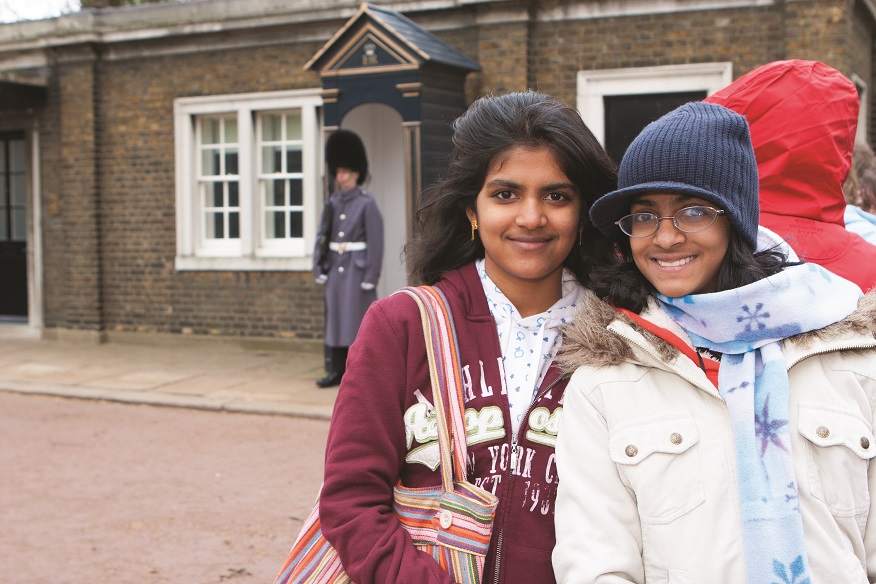
Take a train to England’s capital, getting a full view of the English countryside along the way. Once you’re there, you’ll get an insider’s walking tour of the city’s biggest sites. Start with a walk along the Thames River that cuts the city in half.
Head to Trafalgar Square, the old site of the king’s chariots as early as the 13th century. Now, Trafalgar is a public square that’s a frequent site of celebrations, demonstrations and protests. Named for the Battle of Trafalgar in which Admiral Nelson defeated Napoleon, Nelson’s Column sits in the center of the square with a statue of the admiral at the top.
Visit the National Gallery, situated directly in the square, and admire the priceless works of art dating from the 13th century to the present. Known for housing a van Gogh, a da Vinci, and a Turner, the gallery’s paintings were evacuated to different areas of the British Isles shortly before World War II. When it was suggested that the paintings be moved to Canada for safe keeping, Winston Churchill insisted that they remain on the islands.
Just a short walk away is Piccadilly Circus, the Times Square of London. A large intersection and public space, the Circus is home to shopping centers and its illuminated signs, and is connected to the rest of the city through its own train station. Then, head to Covent Garden, a popular destination for food and shopping, and the site of the Royal Opera House.
Leicester Square, known for its cinemas, is nearby, with a popular park in its center. Look out for the marble William Shakespeare and fountain, which has stood in the square since 1874. Finally, get a glimpse of the entertainment district of Soho. Soho was home to London’s aristocracy until the late 19th century, when an outbreak of cholera sent them elsewhere. Known for its nightlife, Soho is home to plenty of fun shops and department stores.
Day 10: London
Spend your second day in London with the royals, starting with Buckingham Palace. The official residence of Queen Elizabeth II, you’ll know she’s home if the flag above is the Royal Standard (as opposed to the British flag). The stately palace has 775 rooms, and is guarded by the Queen’s Guard, which changes every day at 11 AM.
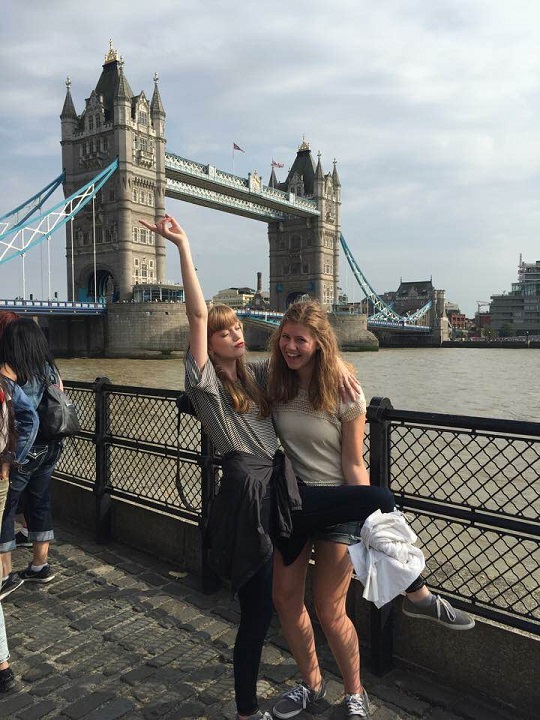
Head over to perhaps the most recognizable landmark in London: Big Ben. Actually the name of the 14-ton bell, not the clock tower (officially known as Elizabeth Tower), Big Ben is the largest of five bells in the 315-foot tower, and tolls on the hour. The massive clock is 23 feet in diameter, with a minute hand that measures at 14 feet.
Flanking Big Ben, the Houses of Parliament (officially the Palace of Westminster) are the seat of the British government. The Houses have been the meeting place of the House of Commons and the House of Lords since the 13th century. Your next stop is the nearby Westminster Abbey, where almost every English king and queen since William the Conqueror has been crowned, and several are buried. A 13th-century Gothic cathedral, it was the site of Princess Diana’s funeral in 1997, and thousands of Britain’s finest citizens are either buried or memorialized there.
Get a look at the largest park in London, Hyde Park. The 350-acre park was originally land that Henry VIII set aside for hunting in 1536, and it became public in 1637. A popular spot for concerts, festivals, and demonstrations, the park is also home to monuments and sculptures like the Wellington Arch.
You’ve probably already seen St. Paul’s Cathedral towering over the city, but now you’ll get a closer look at architect Christopher Wren’s masterpiece. The current structure dates from 1697. The cathedral was struck by bombs during World War II attacks, but survived and provided a symbol of hope for Londoners.
You’ve also probably seen Tower Bridge connecting the north and south of the city over the River Thames. Built in 1894, Tower Bridge is a symbol of London that consists of two towers, from which the Olympic rings were hung in 2012. Finish off the day with an optional tour of Windsor Castle, about 22 miles west of London. The original castle was built in the 11th century by William I, and has since been used as an estate for the monarch, including Queen Elizabeth II, who spends her weekends there.
Day 11: End tour.
Head home or take an extension to Bath, Stonehenge, and Stratford. Read the full itinerary.

